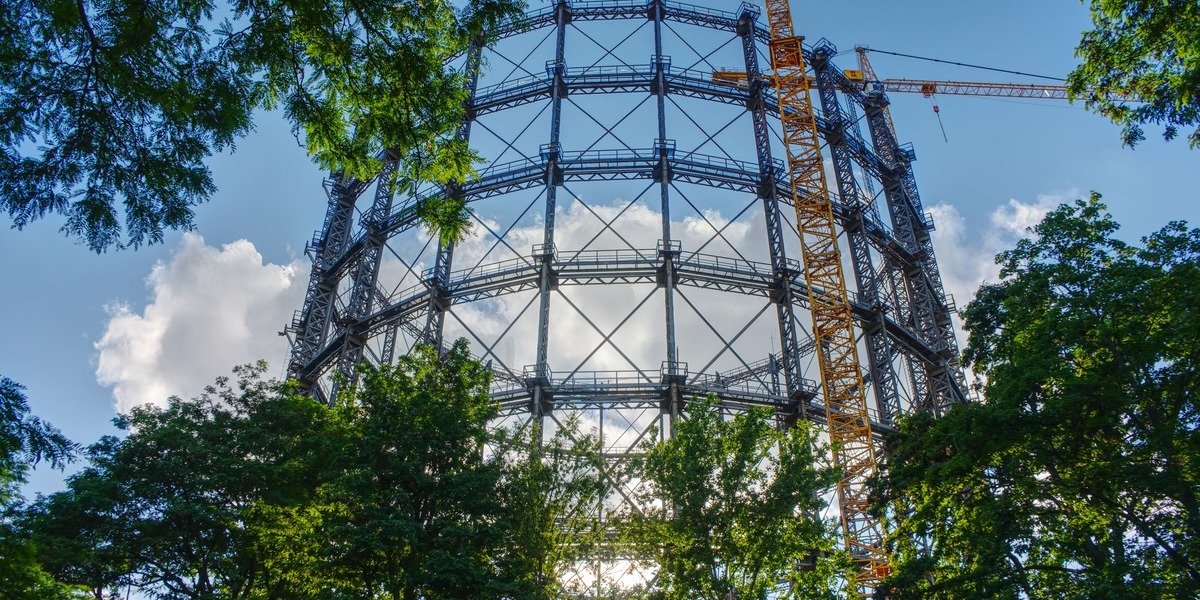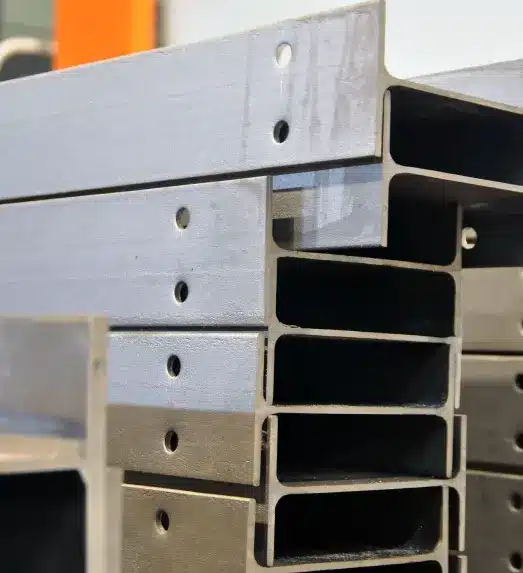Construction professionals have been looking for ways to reduce their environmental footprint and adopt more sustainable practices. The fact is that recycled steel is playing a leading role in accomplishing sustainable construction.
This article will discuss the environmental benefits of using recycled steel and its significance as a leading sustainable choice in construction.
Understanding Recycled Steel
In terms of its origins, recycled steel typically comes from a variety of sources, including steel manufacturing plants and scrapyards. These sources contain scrap metal, which is collected and sorted based on its type, quality, and intended use. The scrap metal is then transported to a processing facility, where it undergoes several stages of sorting, preparation, and processing.
The recycling process involves first sorting the scrap metal by type and removing any contaminants such as paint, plastic, or other metals. Once sorted, the scrap metal is then melted down in a furnace to create new steel. This process requires less energy and reduces the carbon emissions that would have been expended if the steel had been produced from scratch.
Moreover, recycled steel is infinitely recyclable without any loss in quality. This means that recycled steel can be melted and transformed into new products multiple times without losing its strength or performance. This trait makes recycled steel a better alternative to newly produced steel, which requires large amounts of energy and resources.
Environmental Benefits of Using Recycled Steel
Recycling steel is an environmentally responsible choice that offers numerous benefits that cannot be ignored.
One of the primary benefits of using recycled steel is the conservation of natural resources. Much of the iron ore used to make new steel comes from open-pit mines, which require large amounts of energy and water to extract. By using recycled steel, we reduce the need for these resources, preserving them for future generations. In fact, according to the American Iron and Steel Institute (AISI), using one ton of recycled steel saves 2,500 pounds of iron ore, 1,400 pounds of coal, and 120 pounds of limestone.
Furthermore, the energy savings associated with recycled steel are significant. Compared to producing steel from virgin materials, recycling steel requires up to 74% less energy, according to the Environmental Protection Agency (EPA). This translates to a reduction in greenhouse gas emissions as well. It has been measured that for every ton of recycled steel produced, up to 58% less CO2 is emitted than producing new steel.
Recycled steel also contributes to waste minimization. Steel that would otherwise be sent to landfills is turned into a valuable resource, significantly reducing the amount of waste that ends up polluting the environment. In addition, recycling steel conserves water. The production of new steel requires vast amounts of water, but recycling can save up to 40% of that water.
Another important aspect is the economic benefits of using recycled steel. Recycled steel champions a circular economy, in which materials are continuously reused and waste is minimized. This creates a sustainable economic system that benefits both the environment and the economy. Recycling steel also helps to create green jobs, from collecting and processing scrap to manufacturing and selling recycled steel products. The American Iron and Steel Institute states that the industry supports more than 531,000 scrap recycling jobs and generates more than $110 billion in economic activity.
Successful Applications of Recycled Steel
Recycled steel has become a viable option in modern construction due to its numerous benefits such as sustainability, strength, and durability. The use of recycled steel is an excellent solution for reducing the carbon footprint of construction, promoting environmentally friendly practices, and conserving natural resources.
An exceptional example of the successful use of recycled steel is The Crystal in London. The Crystal, a sustainable building, showcases the multiple benefits of recycled steel, including its versatility and durability. The building, designed to be energy-efficient, features facades made entirely of recycled steel, glass, and solar panels. According to online magazine OnOffice, 100% recycled steel was used for the building’s reinforcement.
What’s more, the future of recycled steel applications appears to be endless thanks to the sustainability it offers. We must highlight that with Neutrum®, our net-zero carbon steel product line, we are taking another step forward to keep leading the way to a sustainable steel industry. The engineered structural mesh offsets the total carbon emissions produced from cradle to gate since it is made of recycled steel and has one of the lowest CO2 emissions per ton of steel produced in the industry in North America. This helps us move towards neutrality, and our current emissions are 55% lower than the US steel industry’s average.
Conclusion
Recycled steel is a remarkable solution that fully embraces the principles of structural integrity and environmental responsibility. As an eco-friendly option that is infinitely recyclable, recycled steel provides a win-win outcome for both the construction industry and the environment.
Perhaps the most persuasive aspect of recycled steel is its unrivaled strength and durability. It can be even stronger than non-recycled steel due to its unique composition and production process. This means that structures built with this material are structurally sound and able to withstand the test of time. This is crucial in ensuring the safety of occupants and maintaining the functionality of the structures for decades to come.
Moreover, it carries a significantly lower environmental footprint than its non-recycled counterpart. According to research, this type of steel saves 60% of the energy consumed in producing non-recycled steel, while also reducing water consumption by 40%, air pollution by 86%, and carbon footprint by 58%. This translates to a significant reduction in greenhouse gas emissions, making recycled steel a fundamental ally in the fight against climate change.
Hence, the construction industry must embrace the use of this steel as a primary material for their projects. By doing so, the industry can ensure that they are building structures that are both structurally sound and environmentally friendly, thereby creating a sustainable future.
Contact us for more information.


